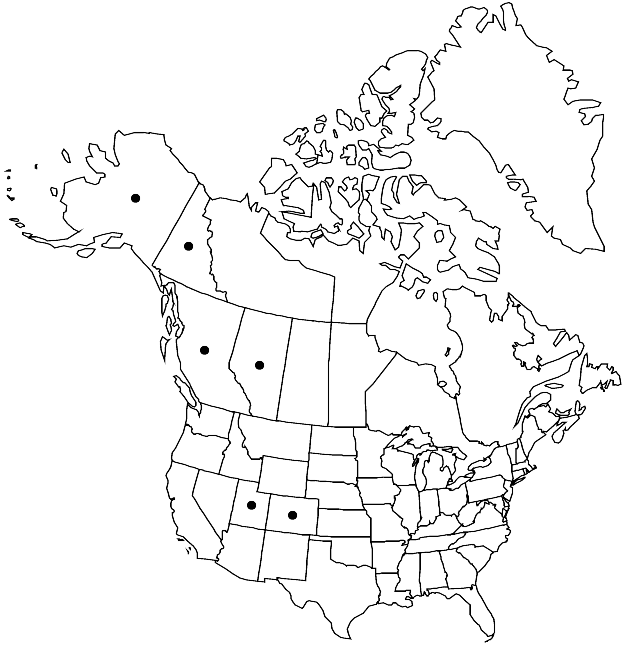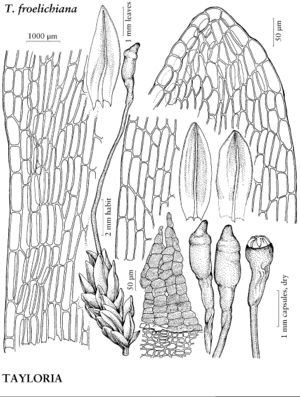Tayloria froelichiana
in H. G. A. Engler and K. Prantl, Nat. Pflanzenfam. 216[I,3]: 502. 1903.
Plants 1–2 cm, in loose tufts, yellow-green. Stems unbranched. Leaves uniformly spaced along stem, slightly contorted when dry, obovate to oblong, 1–2.8 × 0.8–1.2 mm; margins plane or slightly revolute proximally, ± entire; apex bluntly acute, obtuse; costa subpercurrent, ending 6 or fewer cells before apex. Specialized asexual reproduction absent. Sexual condition cladautoicous or synoicous. Seta dark orange, 1 cm, twisted, stout. Capsule pyriform, conic, or globose-conic, urn 1 mm; hypophysis dark orange, as long as urn; columella included; operculum deciduous, flat to conic, apex often blunt, oblique; peristome inserted at mouth; exostome teeth 8, connate in pairs, erect to slightly reflexed when dry, yellow to tan, lanceolate. Spores 27–48 µm, coarsely papillose.
Phenology: Capsules mature summer.
Habitat: Mesic semidisturbed sites
Elevation: high elevations
Distribution

Alta., B.C., Yukon, Alaska, Colo., Utah, n, c Europe, w, s Asia.
Discussion
Tayloria froelichiana can be distinguished most readily from T. hornschuchii by several sporophytic traits: hypophysis twisted and conic, tapering quickly to the seta; operculum deciduous, with an included columella; exostome reticulate to striate, teeth paired, eight in number; and sexual condition cladautoicous or synoicous. The leaves of T. froelichiana are slightly keeled; the proximal leaves are somewhat radiculose. In addition, T. froelichiana differs from T. hornschuchii by the lack of axillary propagula and longer basal (125–195 µm) and apical (75–115 µm) laminal cells.
Selected References
None.
